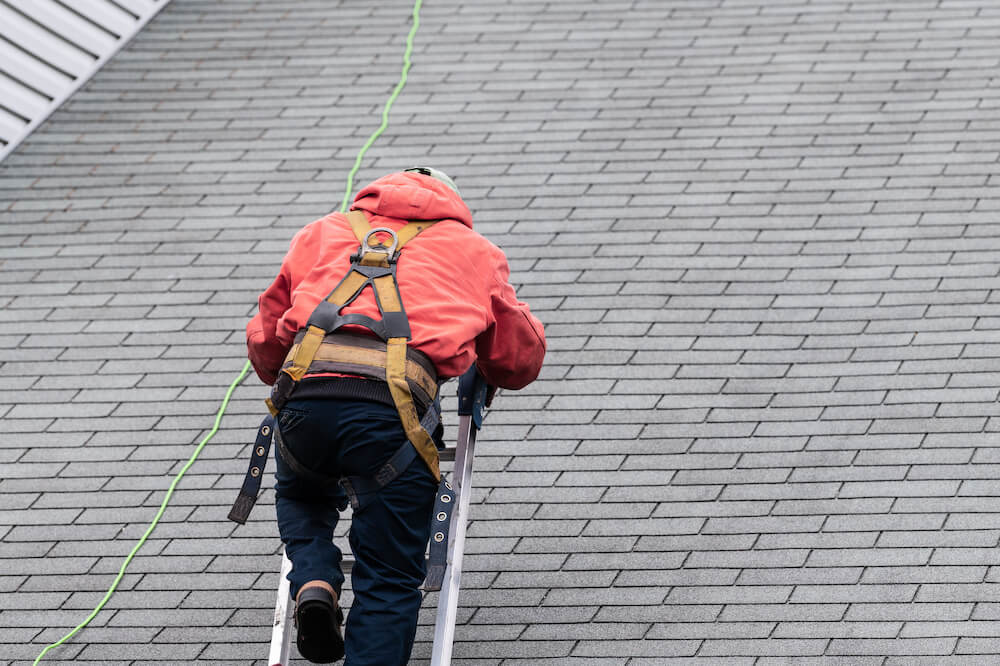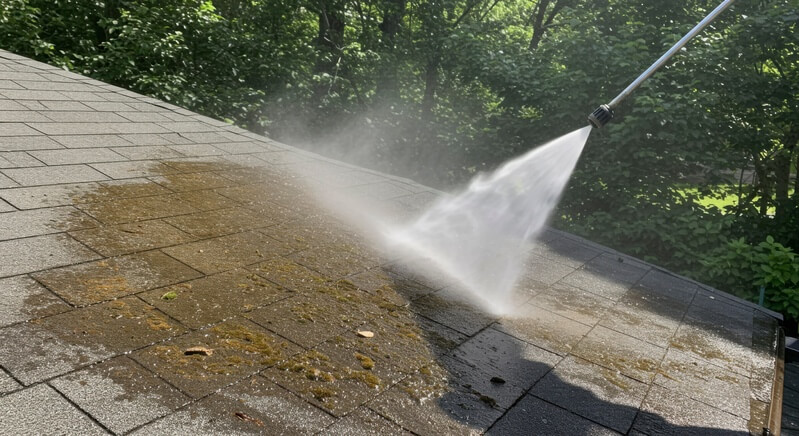Key Takeaways
• Learn the top 7 ways to storm-proof your roof and exterior
• Discover which signs to look for before a storm strikes
• Understand how professional inspections can prevent costly repairs
• Get expert tips for gutters, siding, and attic prep
• Access a ready-to-use storm prep checklist
• Learn how M&M’s emergency response supports Midwest homeowners
When Midwest storms roll in, your roof is the first line of defense against severe weather, protecting your home, while your exterior also plays a crucial role. At M&M Home Remodeling Services, we’ve helped homeowners across Illinois, Indiana, and Wisconsin protect their properties with proactive storm readiness. Whether it’s hail in Crown Point or high winds in Naperville, the key is preparation.
In this post, we’ll cover seven essential tips to prepare your roofing, siding, gutters, and attic before the next big storm.
1. Inspect Your Roof for Vulnerabilities
Before any storm, your first move should be a roof inspection. Look for loose or missing shingles, loose tiles, cracked flashing, or exposed fasteners. These small issues can become big problems during a storm.
Pro tip: Schedule a professional roof inspection through our roof inspection services to ensure nothing is missed.
2. Clean and Secure Gutters and Downspouts
Gutters clogged with debris can cause overflow, leading to fascia damage, roof leaks, and foundation issues. Clear out leaves, twigs, nests, and other debris. Ensure downspouts extend away from the home.
Need help? Learn about our gutter solutions for homes in storm-prone regions.
3. Reinforce Siding and Soffit
Loose siding, soffit, and fascia panels are especially vulnerable in high winds. Make sure these elements are secure and intact. Any warping or gaps should be addressed immediately.
We recommend James Hardie siding for its storm-resistant design.
4. Seal Entry Points and Attic Vents
Water can enter through attic vents, damaged trim, or unsealed eaves. Ensure attic insulation is dry and intact, and check all openings for signs of wear.
Visit our attic insulation page to learn how proper insulation supports storm protection.
5. Trim Nearby Trees and Shrubs
Overhanging limbs can crash into your roof or siding during a storm. Remove dead branches and dead limbs, and cut back trees near your home to prevent impact damage.
6. Prevent Ice Dams Before They Start
Ice dams can wreak havoc on your roof during storm season, especially when heavy rains, high winds, or sudden temperature drops hit your area. When warm air from your attic melts snow on your roof, the water can refreeze at the edges, creating a dam that traps water and leads to leaks, water pooling, and even damaged shingles. Left unchecked, ice dams can cause significant storm damage, requiring costly repairs or even a full roof replacement.
To protect your roof from this risk, start with a thorough roof inspection before severe weather arrives. Look for loose or damaged shingles, damaged flashing, and clogged gutters—these are all vulnerable areas where water can seep in and cause further damage. Regular inspections help spot problems early, minimizing damage and reducing the risk of leaks.
Proper attic ventilation is key to preventing ice dams. Make sure your attic is well-insulated and ventilated to keep temperatures consistent and prevent snow from melting unevenly. Installing a waterproofing membrane on your roof deck adds an extra layer of protection, helping to keep water out even if ice dams form.
During hurricane season or when storms with high winds are in the forecast, consider upgrading to impact resistant shingles and securing your roof with hurricane straps. These measures help protect against flying debris and falling branches, which can make your roof vulnerable to leaks and other storm damage.
Don’t forget to keep your gutters clear of debris—clogged gutters can cause water to back up and pool on your roof, increasing the risk of ice dams and water damage. Trim overhanging branches and secure loose items like satellite dishes to prevent falling debris from causing further damage during a storm.
By prioritizing regular maintenance, timely repairs, and professional roof inspections, you can minimize the risk of ice dams and protect your roof from the next storm. If you notice signs of water pooling, leaks, or loose shingles, contact a roofing expert right away to ensure your home stays safe and secure all season long.
7. Document Conditions for Insurance
Take photos of your roofing and exterior before storm season begins. This documentation is critical when filing an insurance claim for storm damage.
Check out our storm and insurance page for claim support services.
8. Establish a Response Plan
Know who to call after a storm. M&M offers fast response for emergency repairs, temporary repairs, assessments, and insurance support across Chicagoland and beyond.
Explore our full Peace of Mind Proven Process to understand how we protect your property.
FAQ
Q: What should I do if I see missing shingles after a storm?
A: Contact M&M immediately. We’ll provide a thorough inspection and guide you through your repair or replacement options. Missing or damaged shingles should be repaired or replaced promptly to minimize damage and prevent potential roof damage. Roofs are the first line of defense against storms, and protecting your roof and walls from wind, rain, and even hail is essential to prevent your home from sustaining damage when a storm hits. It’s also important to ensure all roofing materials are properly secured before a storm arrives to minimize potential damage caused by flying debris or strong winds.
Q: Does homeowner’s insurance cover roof storm damage?
A: In most cases, yes. Especially if you’ve documented your roof’s pre-storm condition. We help navigate the claim process. Insurance policies may cover various types of roof damage, including hail damage, wind damage, and damage caused by heavy rain or strong winds.
Q: How fast can M&M respond after a storm?
A: Typically within 24 hours in our service areas. Our local crews are equipped for rapid deployment. M&M can provide temporary repairs to protect your home from further damage until permanent repairs can be made. Prompt action after a storm arrives can help prevent further damage caused by water infiltration, wind, or other factors causing damage to the roof and structure.
Ready to Weather the Next Storm?
Don’t leave your roof and home exposed. Schedule your inspection or call (708) 756-7800 to speak with an expert today.
Prepare now, protect always—trust M&M Home Remodeling Services.





